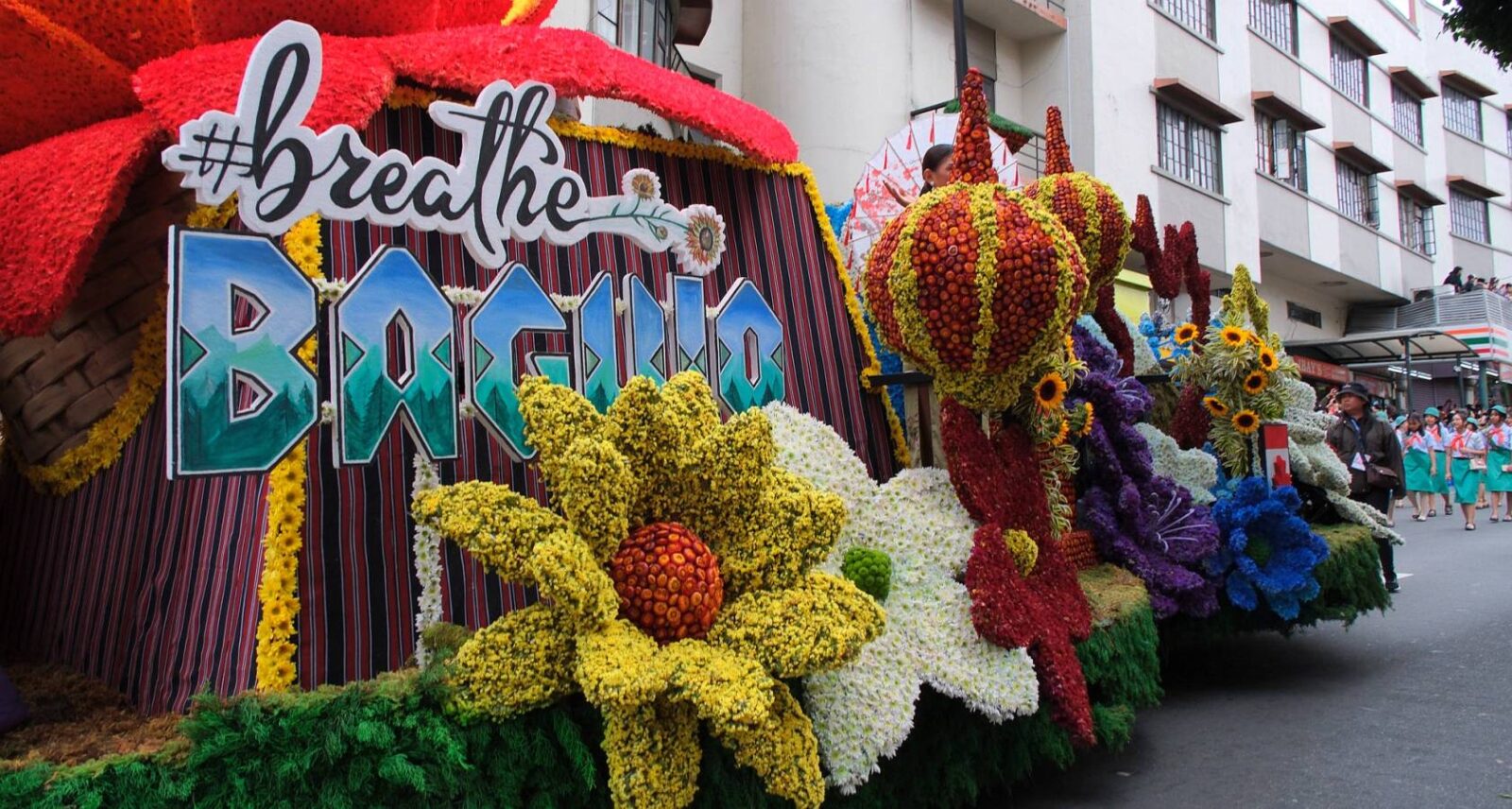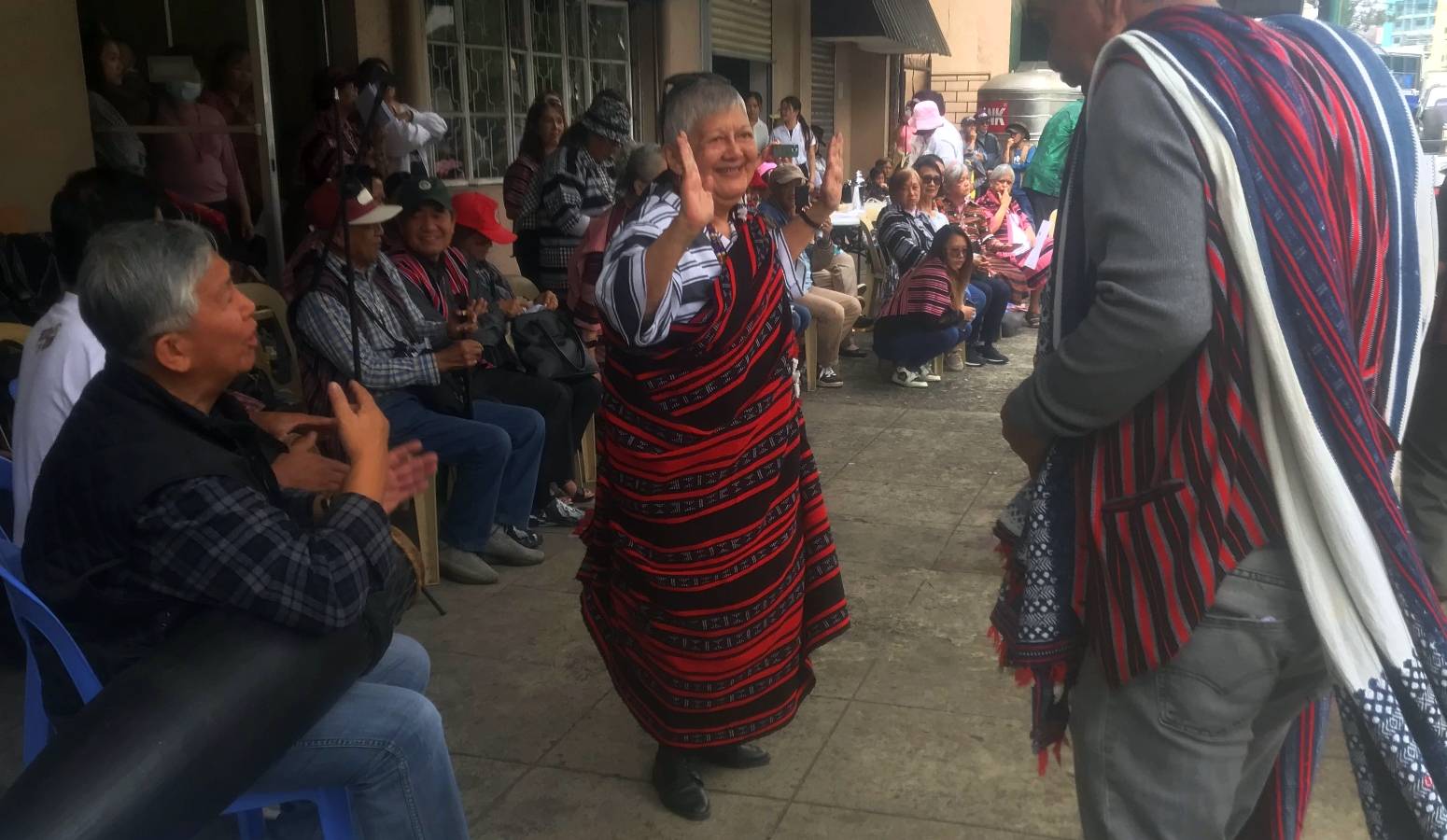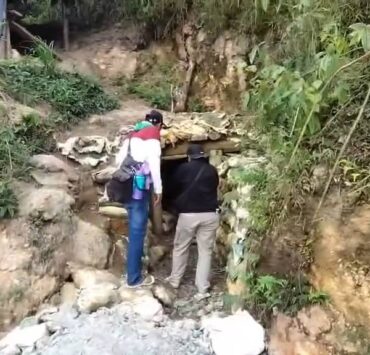Clans celebrate Ibaloy Day at the fringes of Panagbenga parades

BAGUIO CITY—While the pomp of the 30-year-old grand float parade of Panagbenga, or the Baguio Flower Festival drew the most attention on Sunday, indigenous Filipino clans gathered at its fringes to commemorate the 16th Ibaloy Day.
The descendants of Baguio’s original Ibaloy settlers conducted the ritual butchering of a hog at 9 a.m. outside the building of Baguio’s oldest newspaper which closed last year. Then, they proceeded to discuss the colonial trauma that has returned to haunt them, after three Supreme Court decisions concluded that the law guaranteeing indigenous Filipino rights does not protect them.
The Supreme Court rulings issued in 2019, 2023 and 2024 all cite Section 78 of the 1997 Indigenous Peoples Rights Act (Ipra), or Republic Act No. 8371, which excludes Baguio from its coverage since the city “remain[s] to be governed by its Charter and all lands proclaimed as part of its townsite reservation shall remain as such until otherwise reclassified by appropriate legislation.”
In January, the Baguio City government and the National Commission on Indigenous Peoples (NCIP) agreed to jointly lobby Congress for the repeal of Section 78.
This clause in Ipra was “ironic” because the legal foundation for RA 8371 was a landmark 1909 US Supreme Court ruling that recognizes the private land rights of all indigenous Filipinos, said Ibaloy activist and scholar Joanna Cariño.

She was referring to the “Doctrine of the Native Title” that was established when the American high court said her great grandfather, Mateo Cariño, had legitimate rights over sequestered American lands which is now Camp John Hay.
Pasture land
Cariño said Kafagway, the plateau where Baguio was built, was a vast pasture land settled by Ibaloy families like the Cariños, the Caranteses and the Suelos. “Everyone at the time knew their landholdings were measured by where their cattle were fed,” she said.
Ibaloy Day commemorates the 1909 judicial doctrine, which is reflected by the indigenous people protections enshrined in the 1987 Constitution, and which has been cited in legal cases in Australia and the United States, according to University of the Philippines Baguio communications professor Jimmy Fong, who is also an Ibaloy.
In the Jan. 14 joint session of the city council and the NCIP, Councilor Peter Fianza pointed out that Baguio’s origins led to “Ibaloys being legislated out of their lands” beginning with the designation of Baguio as a townsite reservation where all lands are open for auction because of the American colonial government’s desire to populate the mountain city.
Baguio was designed and built by the colonial government, initially to serve as a “hill station” or sanctuary for Americans escaping Manila’s heat before it became the seat of government during the summer season. It was formally opened as a chartered city on Sept. 1, 1909, six months after American jurist Oliver Wendell Holmes penned the “Native Title” Doctrine.
Without their consent nor complete understanding, the Ibaloys were designated Filipino residents under American control via the Philippine Organic Act of 1902 and were subjected to Act No. 496 on Nov. 6, 1902 which required the titling of properties, said Fianza.
Mateo Cariño’s lawsuit against the US colonial government emanated from Acts No. 627 and 636, which segregated reservations including lands meant for military purposes, he said.
“For the city of Baguio, it will still be a long way to be able to correct the historical injustices to the indigenous peoples’ struggles to their lands and life [quoting] [fellow Ibaloy Councilor] Jose Molintas during his stint with the United Nations Expert Mechanisms of the Rights of Indigenous Peoples,” Fianza said.
“Sadly it is a race against time,” he said, because ancestral properties are slowly being claimed by both government and other special interest groups while Section 78 prevails.

















